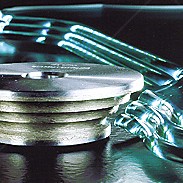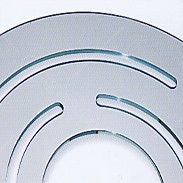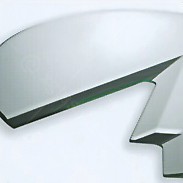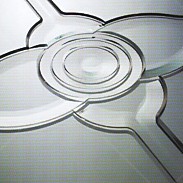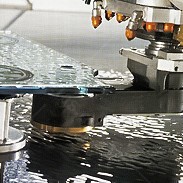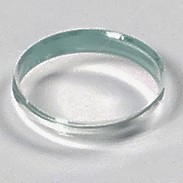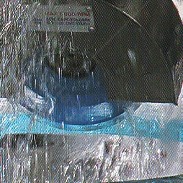Glass Processing with Digital Technology Assistance
Processing possibilities of CNC Intermac 45+ and Intermac 37
The CNC machines that Glas Expert has at their disposal are glass processing centers based on 3D autoCAD files. The processing heads can follow a 3D trajectory, resulting from the interpolation of the 5 axes X, Y, Z, A and C.
The performance software that works with the DXF files, as well as the mechanical elements that make up the machining center’s assembly, allow us to execute glass pieces with dimensional deviations in the order of tens of millimeters.
The maximum dimensions of the glass that can be processed are 4200 x 2300 x 500 mm and correspond to the three X, Y and Z axes.
Equipped with 24 tool housings, located on the right side of the work table, optimising the time it takes to change the CNC machine milling heads.
Edge processing with various types of profiles
CNC machines have the ability to finish and process both glass and marble or even a combined glass and marble set – table tops containing both materials, for instance,.
The CNC machining centre is capable of a myriad of possibilities, limited only by the designer’s imagination.
The CNC machine tools can execute a 90-degree bevelled edge, which requires a longer processing time but it results in a better quality finish.
If an atypical edge is desired, it is possible to control the individual cuts necessary for the execution of the required design.
Due to the fact that the machine’s Z axis can go up to 500 mm high, we can practically handle any thickness of glass within this range.
Glass milling (routing)
CNC Glass routing is possible for applications like the installation of washbasins in glass countertops, the mounting of spotlights in mirrors, the mounting of sockets in wall cladding.
For safety, cut edges must be finished – either with the matte option (if the cut is hidden) or the glossy option (if the cut remains visible).
The minimum radius for visible inner cutouts is 15 mm, in this case the edge can be glossy. If the requirement is for a smaller radius of 12mm, only matte edge finishing is possible. For situations where the cut-out is completely covered, the minimum internal radius can be 7 mm, in which case the edge remains minimally processed after cutting.
Facings for both interior and exterior angles
For special applications such as art furniture, it is possible to ‘face’ the interior trim. The capabilities of CNC machines to interpolate the 5 axes make it possible to perform this type of finishing with maximum accuracy of both the internal cutting angle and the face size.
Writing on both the surface and the edge of the glass
CNC’s coordinated 5 axes system allows for writing on both the surface and the edges of the glass. The only detail required is the specification of the desired font, which is converted to a vector file and then engraved onto the edge or the surface of the glass.
Engraving can have different thicknesses and depths by using different writing heads. Simple characters or complex drawings can also be engraved using this technique.
Glass and mirror engraving
Engraving can be carried out both in straight lines and circular arcs or curves. The most requested types of engraving are usually related to decorating mirrors that harmonise with elegant furniture. The various widths of “V” profile engraving discs available give us a multitude of engraving options, which can have both decorative and functional roles.
Drilling glass with the ‘Head-to-Head’ system
CNC is a indispensable for applications where precision drilling is essential. In order to temper glass that has drilled holes and/or cutouts, the edges must be properly finished. Having experienced various types of drilling technology, we can confidently say that CNC-processed glass has a greater degree of safety in later processing and use than when it is processed with conventional technologies.
Straight and curved lines cut with the diamond disk
In the case of multilayered laminated glass, used for glass floors or bullet proof glass, cutting should be done with a diamond disk. In this way we can process the cuts in less time and, implicitly, at a lower cost than if it were done by milling. The major advantage of cutting the glass after lamination is that it is possible achieves very accurate and unobtrusive corners.
Finishing edges for glass sinks
At the end of the glass contouring process, the edges will not be parallel to the ground. To align the edges with the flatness of the countertop, we can use the CNC technology to adjust the angles of the curved edges. This application relates specifically to glass sinks or curved glass products whose edges are supposed to be aligned with the countertop next to which they are mounted. Moreover, for these applications, the edge can be inclined towards the inside of the washbasin so that use and cleaning is as easy as possible.



